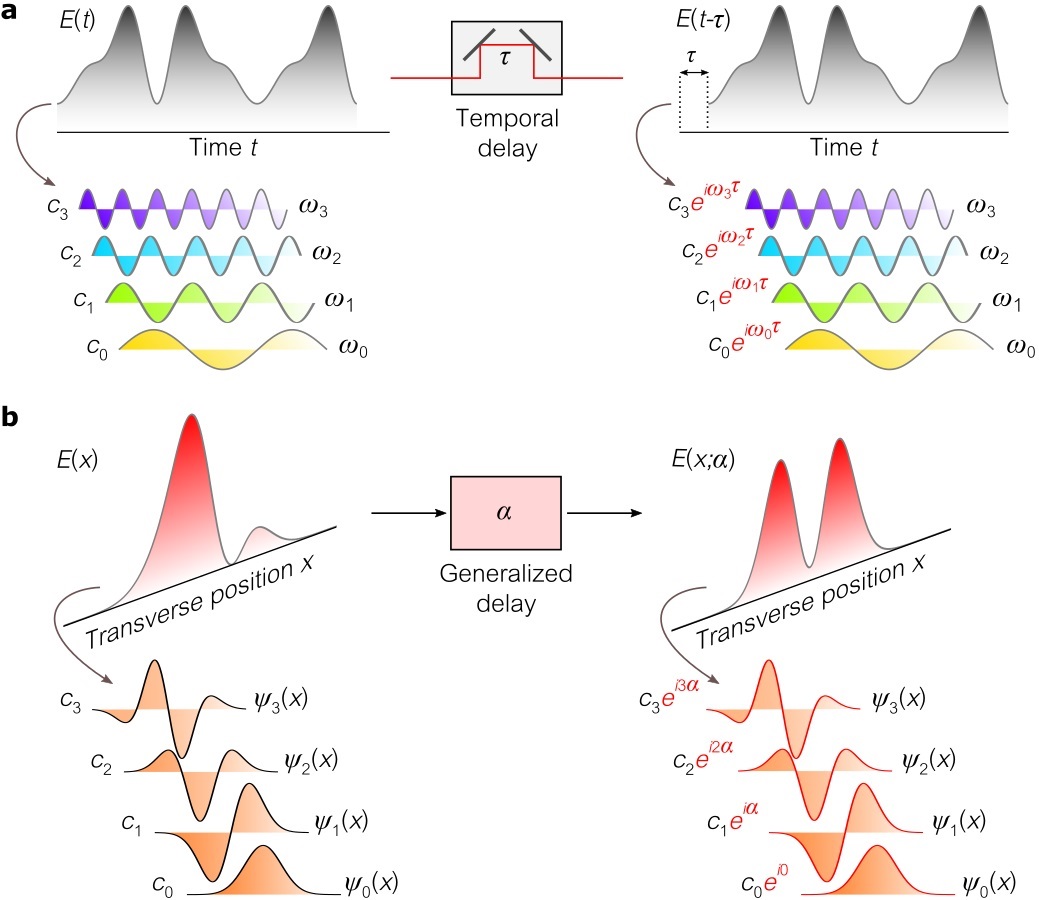September 27, 2016
WASHINGTON — Interferometers have myriad uses, from detecting gravitational waves to teasing apart the interactions of molecules within our bodies. The instruments make such minute measurements by manipulating beams of light using an optical delay — an effect that's typically achieved by adding length to one of the beam's path, which slows the signal down. The development opens up new ways of analyzing light beams in space instead of time. Now, a team of research teams from the University of Central Florida, Florida, USA and the University of Rochester, New York, USA have found a way to introduce a delay that's unrelated to time.
The research builds upon the growing appreciation of the relevance of the quantum mechanics formalism to the practice of classical optics and "provides an optical device that has been missing from the arsenal of optics," said co-author Ayman F. Abouraddy, associate professor of optics and photonics at the University of Central Florida, Florida, USA.
This new solution will be presented by the research team at Frontiers in Optics (FiO) / Laser Science (LS) in Rochester, New York, USA on 17-21 October 2016.
Interferometers are devices that typically separate a beam of light in two paths and then bring those rays together again. Introducing a "delay" into one of the paths allows scientists to collect an interferogram — the pattern formed by the waves of light interfering with one another. Unlike traffic jams which create annoying delays, these delays are useful because without them scientists would be unable to make extremely precise measurements.
The devices typically consist of complex arrangements of mirrors and beam splitters, which cut a beam of light in two and are often the most crucial part of many interferometers. Almost every optical interferometer includes a tunable delay.
In the new research, the scientists developed a device called a "Hilbert-space analyzer." It operates as a kind of generalized beam splitter by introducing a "generalized delay" which avoids adding extra lengths in the beam paths. Instead, it manipulates the beam and transforms it using extremely useful devices known as spatial light modulators.
The traditional delay can be used to obtain the spectrum of an optical signal — the wavelengths or frequencies from which the signal is constructed via optical interferometry. The generalized delay can be used to extract the contributions of other waveforms, also known as modal sets, to an optical beam.
Now, "we don’t need to find new approaches for new modal sets: the Hilbert-space analyzer is a one-stop shop for all your modal analysis needs," Abouraddy said. “For now, the most interesting application for Hilbert-space analyzers is in optical communications, which uses light to carry information across some distance,” he added. The technology is useful where the physical connections are impractical due to high costs or other considerations.
About the Presentation
The presentation, “Hilbert-Space Analyzers: Basis-Neutral Modal Analysis via Generalized Optical Interferometry,” by Ayman Abouraddy will take place from 14:00-14:30, Friday, 21 October 2016, in the Highland Room C, Radisson Hotel Rochester Riverside, Rochester, New York, USA.















